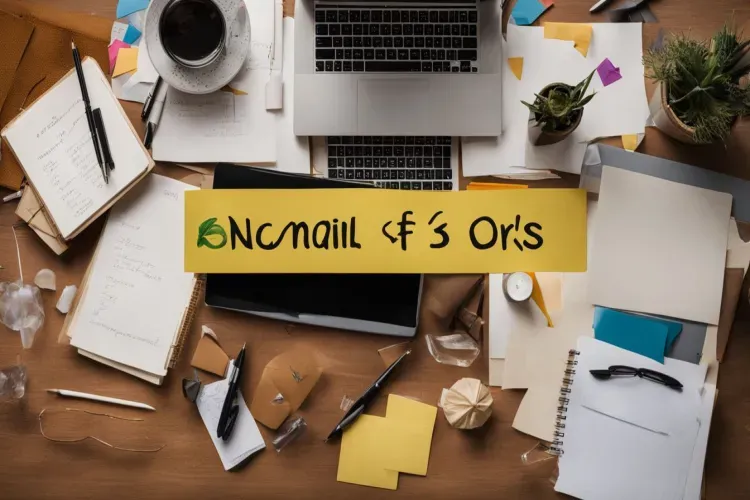Real Estate Agent Follow Up Emails
Sending Real Estate Agent follow up emails is key for real estate agents looking to close deals, keep in touch with past clients, and warm up leads. Think of these emails as a way to remind people you’re ready to help them buy or sell homes.
Use different types of follow-up messages based on the situation. For example, after showing houses or hosting an open house event, reach out with a thank-you note and ask for feedback.
If someone says they’re not interested right now, send them updates on market trends every few months to keep their interest alive.
Writing the perfect email takes some skill. Make your subject lines pop so recipients want to open them. Keep messages short and focused on the reader’s needs — whether that’s selling their home fast or finding their dream place.
Include clear next steps like setting up a call or meeting in person at an open house address. Automation tools can help send these emails at just the right time without extra work from you.
With smart follow-up strategies and useful templates, you’ll be able to turn more leads into happy clients.
How to Write an Email to a Real Estate Agent

Crafting an email to a real estate professional is simple. Start with a clear subject line that grabs attention. This could be about finding your dream house or selling one. Next, introduce yourself briefly and mention how you found them, maybe through an open house event or online listing.
Use short sentences and ask directly what you need. Be it scheduling a showing, getting more details on a property address, or help in selling your home. Include when you’re available for a call or meet-up.
Always be polite; end the email with thanks and say you’re looking forward to their reply. Make sure your contact info is easy to find so they can get back to you quickly.
Top Real Estate Follow-Up Email Strategies

Nailing the follow-up email is key to keeping leads interested and turning them into clients. From just saying hello again after an open house to checking in with those who seem a bit cold, each strategy keeps you front and center in their minds.
The Post-Open House Follow-Up
After an open house, sending a thank-you email is key. This type of message shows you value every person who walked through the door. It creates a chance to keep talking with potential buyers.
In your email, include details about the property they saw. Ask for their feedback too. This move makes them feel heard and keeps the conversation going.
Next step is to suggest scheduling another visit if they liked the home or offer details on other homes if they’re still looking. Adding photos or links to listings can spark their interest again.
Use a friendly tone and make it easy for them to reach back out to you. Keep this email short but useful, showing that you’re there to help find their dream home or sell their current one efficiently.
The “Not Interested” Follow-Up
Getting a “not interested” reply can be tough, but it’s part of the real estate game. Don’t let it stop you. Use this chance to make a lasting impression. Send a polite and brief email back.
Thank them for their time and keep the door open for future opportunities. You could also offer them helpful insights or updates related to the real estate market without pushing too hard.
This shows you value them more than just a potential deal.
Keep your message clear and easy to read. A simple “Thank you” can go a long way. Ask if they might want tips or news about houses in the future. Make sure they know how to reach you if they change their mind or have questions later on.
Even if they’re not ready now, your kindness could bring them back when they are.
The “Keep Leads Warm” Follow-Up
Sending emails about the latest trends in home listings and sales every few months is a smart way to stay in touch with past clients or those who might not be ready yet. This method keeps you on their radar for when they decide to jump into buying or selling.
I always include something valuable like market insights or tips on how to make their homes more appealing to buyers. This approach shows them I’m here to help, not just sell.
I’ve found using real estate follow-up email templates saves time but still lets me add a personal touch. For each email, I tailor the message based on what I know about their interests or past conversations we’ve had.
It’s all about balance—keeping the connection alive without overwhelming their inbox. Over time, these warm leads often reach out when they’re finally ready to make a move, proving that patience and persistence pay off in building strong client relationships and turning leads into satisfied customers.
The “We Didn’t Get It” Follow-Up
Sometimes, you make an offer on a house but don’t win the bid. It’s disappointing, for sure. But this moment can turn into a chance to show your clients how committed you are. Use a follow-up email to express understanding and keep their spirits up.
In my own work, I’ve found that sending a quick note saying something like, “We didn’t get it this time, but I’m here to help us find something even better,” makes a big difference.
This approach shows them that you’re not just there for the easy wins but also during the tough times.
This kind of email does more than just address the immediate letdown. It opens doors to future conversations and keeps your clients engaged and hopeful about what’s next. Make sure to include options for moving forward in your message too.
Suggest setting up new viewings or reviewing what they liked about the property we missed out on so you can better tailor future searches to their tastes and needs. My experience has shown me that these efforts remind clients they’ve got a knowledgeable guide by their side – someone ready to jump back into the search with renewed focus and determination.
The “Just Touching Base” Follow-Up
Sending a “Just Touching Base” follow-up email is like saying hello to an old friend. You want to make sure they remember you but keep it friendly and light. Use this email to remind your clients or leads you’re there for them, without pushing too hard.
Imagine dropping a note just to see how things are going with their home search or if they have any new real estate needs. It’s less about selling and more about caring.
In my experience, these emails often get happy replies. People like when you check in on them without expecting much in return. I always include something personal – maybe a comment on the local market trends or a tip that might interest them based on our last conversation.
This way, it feels less like a sales pitch and more like genuine help from someone they can trust in the real estate game.
The “Can You Recommend Me” Follow-Up
For real estate agents, asking for referrals is key. Use the “Can You Recommend Me” follow-up to do just that. After you close a deal or show a property, send an email. In it, kindly ask if they know anyone looking to buy or sell a home.
Be sure your email feels personal and grateful. Say thank you for their time and help.
This type of email keeps your network growing. It shows clients you value them not just for their business but also their connections. Include a simple way for them to reply or pass along your contact info.
Maybe add a line like, “If you’re happy with my service, please feel free to share my contact with friends!” This makes it easy for leads to help out and recommend you.
The “How Can I Help” Follow-Up
Send an email after meeting potential clients or leads that have cooled down. Offer to answer any questions they might have about buying or selling their home. Use simple language and ask if there’s anything specific they need help with, making it easy for them to respond.
Make this type of email part of your routine. It shows you care and are ready to assist in their real estate journey. This approach helps build trust and keeps you on their radar for when they’re ready to make a move.
Keep the message brief and focused on them, not just selling your services.
The Art of Crafting the Perfect Real Estate Follow-Up Email
Writing the best real estate follow-up email is all about getting noticed and making a connection. You want to grab attention, show you care, and get them to act—fast!
Eye-Catching Subject Line
Your subject line is the first thing people see. It makes them decide to open your email or not. Think of it as the title of a book. If it’s good, they want to read more. Use catchy words that connect to real estate like “dream home,” “new listing,” or “open house.” Make sure your subject line speaks directly to what the reader wants or needs.
Use personal touches in your subject lines too. Adding the person’s name can grab their attention quickly. Also, phrases like “Did you see this?” or “Quick question about your home” work well.
These make emails feel less like bulk messages and more like one-on-one chats. Keep these short and sweet – aim for less than 60 characters so they’re easy to read on phones and computers alike.
Personalization
Make your emails feel special. Use the name of the person you’re writing to. This shows you know who they are and care about connecting with them. Talk about things that matter to them, like their search for a new home or selling their place.
Adding personal touches makes people feel valued and more likely to respond.
Keep track of what each client likes or needs. If they’ve told you they want a big yard for their dog, mention homes with big yards in your emails. Or if they love kitchens, send them listings with great cooking spaces.
Using details like these shows you listen and understand what’s important to them, making your follow-up stand out from others’.
Brevity
Keep your emails short. People are busy, especially those looking to buy or sell homes. They don’t have time for long emails. Aim for quick reads that get straight to the point. This means picking every word carefully so it packs a punch but doesn’t waste time.
Use simple language too. Big words might sound smart, but they can confuse readers and slow them down. Your goal? Make sure clients can skim your message and still grasp the key points – like scheduling a call or taking the next step in their real estate journey without having to dig through fluff or jargon.
Recipient Focus
Making your emails about the person you’re writing to can really help. You should always think about what they need or want. This means picking out details that matter to them, like showing how a house matches their dream home features or giving tips on selling their house faster.
It’s like when you get a gift that’s just right for you – it feels special.
Use clear calls for action in your emails. Tell them exactly what step to take next, whether it’s setting up a meeting or calling for more information. This cuts down confusion and makes it easy for them to move forward with buying or selling their home with you as their guide.
Inclusion of a Clear Call to Action
Every email you send should make it easy for leads to know what step they need to take next. This could be as simple as asking them to schedule a call, reply with more information, or visit your website for new listings.
Your goal is to guide them towards an action that keeps the conversation going. Think of it this way: if your email is the map, your call to action is the big red “X” marking the spot where treasure lies.
Using strong and direct phrases like “schedule a private showing” or “take the next step” can turn passive readers into active participants in their real estate journey. Keep these prompts clear and at the forefront of your message, ideally placed in spots where they’re easy to find — like at the end of an important paragraph or right before your sign-off.
This method not only boosts engagement but also increases the chances of turning inquiries into appointments or even sales.
Automation of Campaigns
Using automation for your email campaigns saves time and boosts efficiency. Imagine setting up a series of emails once, then letting the software send them out at the best times. This method is like having an assistant who never sleeps.
It keeps your real estate business in mind all day and night. For me, I found that automated follow-up emails helped me stay on top of new leads without drowning in work.
One great tool is email marketing software designed for real estate agents. These programs can track open rates, click-throughs, and even help segment your audience so you can tailor messages more precisely.
Personal stories here: After switching to an automated system, my open house follow-up emails got better responses. Clients felt I was reaching out personally, even though the system was doing most of the heavy lifting.
Automation makes keeping up with leads easier while ensuring no one slips through the cracks.
Utilizing a Real Estate Agent Email Database for Follow-Up
A real estate agent email list is a powerful tool. It lets you send updates and info to lots of people at once. I use mine to share news about house sales and trends every few months.
This keeps past clients interested and might make them want to work with me again. You can do this too. Add all your contacts in one place. Then, plan when you’ll reach out to them throughout the year.
Using this method, I’ve seen more people respond back wanting help with buying or selling their homes. It’s like keeping the conversation going even when we’re not talking directly.
You can set up automated emails for birthdays or holidays too! This shows your clients you remember them without making extra work for yourself each time.
Real Estate Email Templates for Effective Follow-Up
Real estate email templates make following up easy and fast. They help you send the right message at the right time. You can find templates for all kinds of follow-ups, from thanking someone for visiting an open house to checking in with someone who hasn’t replied yet.
These tools are great because they save you time and keep your messages professional and friendly. Want to get better at keeping in touch? Using these templates might be a smart move.
Dive deeper into how they can change your game!
Listing Feedback Follow-Up Email
Send out a listing feedback follow-up email after someone visits your property. This kind of email lets you touch base with potential buyers or sellers. You can ask what they thought about the place.
Did they like it? Is there anything that could be better? Use this chance to show you care about their opinion. Make sure your message is clear and friendly. Add in a call to action, like asking them to get in touch if they have any more questions or want another look at the property.
I once sent a follow-up email after an open house, asking for feedback on what visitors liked and didn’t like about the home I was showing. The responses were eye-opening! Many mentioned wanting more natural light in the living room, something I hadn’t thought much about before.
Armed with this insight, I suggested lighter curtains to the seller, which we then highlighted during future viewings. It made a real difference; interest in the house went up significantly afterwards.
This experience showed me how powerful these emails can be for improving listings and connecting with clients.
Showing Follow-Up Email
After showing a home, send an email to say thanks. Include details from the visit and ask for feedback. This keeps you in touch with potential buyers or sellers. Tell them you’re there to help find their perfect place or sell fast.
I once sent a follow-up after a couple seemed unsure during the tour. I included some benefits of the home they missed and answered questions they had. They appreciated this effort and later chose that house! Always end your emails by offering more help or setting up another meeting.
Open House Follow-up Email
Sending a follow-up email after an open house is key. This type of email keeps you in touch with those who might want to buy or sell. Use it to say thanks for coming and remind them what they liked about the house.
Share photos or a virtual tour link so they can take another look at the home. Don’t forget to ask if they have any questions or need more info.
In my experience, this approach works well. It makes people feel special and keeps the property fresh in their minds. I always include something personal we talked about during the open house, like a nearby coffee shop we mentioned or how a room could be perfect for their hobby.
This personal touch shows you pay attention and care about finding them the right home. Plus, offering your help with any step of buying or selling homes builds trust and keeps the conversation going.
Seller Follow-Up Email
After an open house or showing, reaching out to the seller is key. Use emails to keep them in the loop. Tell them how the event went and what people thought of their home. This step makes sellers feel valued and informed.
It’s like they are part of the team working to sell their house.
I once wrote a follow-up email after a busy open house. In it, I highlighted positive feedback and outlined our next steps. The seller appreciated this update and felt more at ease during the selling process.
Emails like these help build trust between you and your clients, making them more likely to recommend you to others looking to sell their homes.
Unresponsive Lead Follow Up Email
Crafting an email to someone who hasn’t replied can be tough. You want to grab their attention again without sounding too pushy. I found success by keeping the tone friendly and the message brief.
Start with a catchy subject line like “Still dreaming about your perfect home?” This makes them curious. In the body, remind them gently that you’re here to help find their ideal property or get the best deal for their current one.
Include something personal from your last interaction or offer new insights on market trends that could impact their decision.
Mix in questions like “Did you see any homes you liked recently?” to encourage a reply. Always end with a clear call-to-action, such as setting up a time to talk or inviting them to another open house.
Using simple tools like email automation helps keep track of these follow-ups without missing out on potential leads. From my experience, even those hard-to-reach leads appreciate effort when it feels genuine and not just another sales pitch.





Leave a Reply